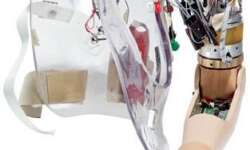Robotic Assistance for the Disabled

Embedded devices, particularly digital ones specially designed to assist individuals with disabilities, are often seen as the next step in that particular field of technology. Such embedded devices generally have several advantages over the previous wave of embedded devices that have monitoring functions, control capabilities, and the ability to access and use communication protocols like the internet. The modern embedded applications devices do not stop monitoring, tracking, and relaying information; they almost always directly assist the user, such as a prosthetic limb or a personal transport assistance vehicle.






